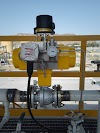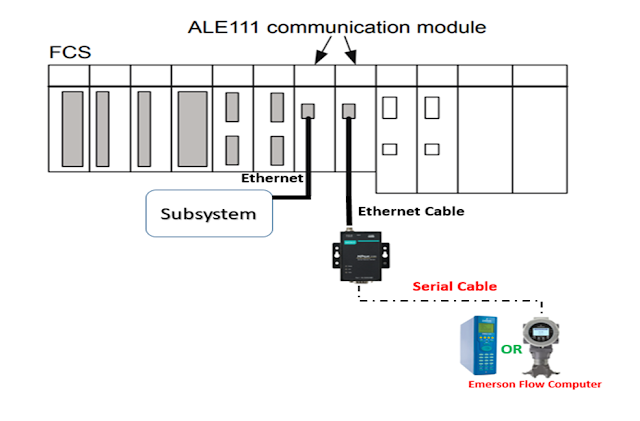Third-Party Integration with DCS - Example
Content
- What is a third-party system in the control system?
- What are the Interfacing Protocols?
- SCADA Interface – DCS Server is acting as the middleman
- Direct interface with DCS Controller
- Example of third party system interface:
- 1. MPFM
- 2. Compressors
What is a third-party system?
Any unit, equipment, or
electronic device that has several process or operational parameters and
its integration with the control system is not like the conventional Input/output thereby requiring a separate
communication protocol shall be coined as a 3rd party system. For
example, in an oil and gas processing facility, the DCS system is there for
operation and control of the processing operations, while other units like the power
generation system act as a separate operational unit. The operational status
of power generation including the unit’s run status, alarms, electrical
parameters, voltage, current, and power ratings are relayed to the central control
system through a separate mechanism. This power generation system shall have
its own PLC-based control system which is responsible for the operation, control, and safety of the power generation system. However, for the centralized
monitoring few key critical parameters like the status of operational units,
emergency shutdown status, etc shall be sent to the central DCS. This
interfacing shall be unlike the typical IO. To integrate this system,
separate hardware, software, and communication mediums shall be required. In this
write-up, we shall discuss this in detail. As an example, two test
cases shall also be presented as it follows. Interfacing MPFM with DCS or any
gas compressor station with DCS shall be presented as an example to further
understand this 3rd party integration with DCS.
Firstly
the interfacing protocols shall be discussed which is largely relevant to the
DCS system end. Secondly the aforementioned stated examples shall be elaborated
further to simplify the integration concept.
Interfacing Protocols
We shall discuss two approaches here. The first approach is the SCADA interface using the DCS server as the middle man and the second approach is a direct interface with the DCS controller without any server as the middle man.
1. SCADA Interface – DCS Server is acting as the
middleman
Example: Honeywell – Quick Builder
SCADA points in Honeywell is defined using the Quick Builder. From Configuration
Studio, open Quick Builder. It is the tool to create and maintain a
configuration database that comprises of Channels, Controllers, and points.
Generally, a parameter is defined as a Point
and grouped under the Controller. The group of
controllers is then clubbed under the Channel.
2. Direct interface with DCS Controller
Example 1: Yokogawa – ALE Card Model ALE111, Ethernet Communication Module
ALE card is used for the configuration of SCADA points in Yokogawa DCS. This module is used to perform Ethernet communication with subsystems.
Example 2: DeltaV – Serial Card
It must be kept in mind that a
process controller must not be loaded with communications duties in addition to
normal processing, hence central processing unit loading must be done
carefully. This could necessitate a dedicated communications controller to
handle third-party data.
Example:
1. MPFM
Parameters;
|
|
MASS FLOW |
MASS TOTALIZER |
VOLUME FLOW |
DENSITY |
|
OIL |
KG/S |
KG/S |
SM3/H |
KG/M3 |
|
WATER |
|
|
|
|
|
GAS |
|
|
|
|
Some other parameters
- Common alarm
- Gas volume fraction
- Gas-liquid ratio
- Basic sediment water
- Gas Oil Ratio
- Venturi DP mbar
- Flowing Temperature Deg C
- Flowing Pressure Barg
- Mass Totalizers for Oil, Water, Gas in Kg
- Mass Totalizers for Oil Water Gas in Sm3
2. Compressors
Gas engine-driven compressors or diesel engine-driven compressors are widely used in natural gas processing facilities in the oil and gas industry. These compressors are used at the final export line for injecting the processed natural gas into the gas network or they are also deployed at the front end for increasing pressure of mixed/raw hydrocarbon flowing from reservoirs to inlet separators or slug catchers of hydrocarbon processing facility. There are hundreds of parameters related to plant operation and engine/compressor operation. Usually, plant operation-related parameters are directly connected to the DCS through conventional hardwired 4 to 20 mA schemes like pressure, temperature, and flow transmitters; generally, these instrumentations are called off-skid instruments. While the on-skid parameters associated with the engine compressor are connected with the on-skid PLC.
- Bearing temperature
- Engine Lube oil pressure
- Engine Lube oil temperature
- Compressor lube oil pressure
- Cylinder exhaust temperature
- Engine speed/rpm











3 Comments
Really helpful for understanding these topic
ReplyDeleteVery nice blog
ReplyDeleteI am glad that you liked it.
Delete